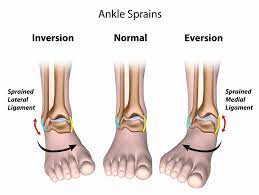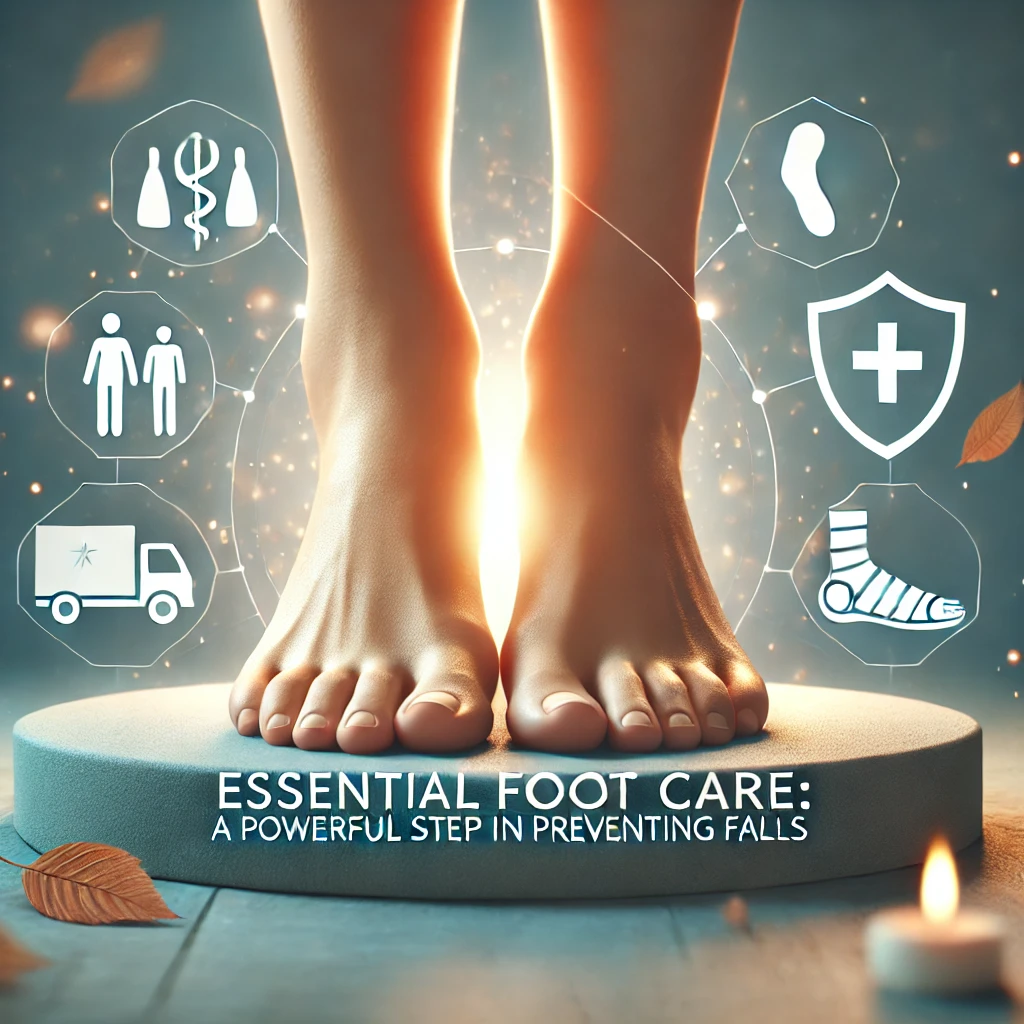Unlock the secrets to effectively managing ankle sprains with our expert guide. Dive into prevention tips, treatment strategies, and rehabilitation exercises to enhance your recovery and safeguard your mobility.

Ankle Sprains: A Comprehensive Overview
Ankle sprains are a frequent occurrence, striking athletes and non-athletes alike, often resulting from an unexpected twist or turn of the foot. This detailed exploration provides an in-depth look at ankle sprains, from their causes and symptoms to effective treatment strategies and preventive measures.
Table of Contents
Understanding Ankle Sprains
An ankle sprain arises when the foot lands improperly, causing the ankle to roll in an unnatural direction. This sudden movement can stretch or tear the ligaments that stabilize the ankle bones, leading to varying degrees of injury severity.

Causes and Risk Factors of Ankle Sprains: A Detailed Insight
Ankle sprains, a prevalent injury among individuals engaging in physical activities, can significantly impact mobility and quality of life. Understanding the causes and risk factors is crucial for prevention and effective management. Here’s an in-depth look at what triggers ankle sprains and the factors that increase susceptibility to this injury.
Sudden Movements or Changes in Direction
How It Happens: Quick, unexpected changes in direction or speed can place excessive stress on the ankle ligaments. This is common in sports like basketball, soccer, or tennis, where rapid pivoting is part of the game.
Preventive Measures: Incorporating agility training and balance exercises into your fitness regimen can enhance proprioception (the body’s ability to sense movement and position) and muscular control, reducing the risk of injury.
Walking or Running on Uneven Ground
How It Happens: Uneven surfaces, such as trails, cobblestone paths, or poorly maintained sidewalks, can cause the foot to land awkwardly, increasing the likelihood of rolling or twisting the ankle.
Preventive Measures: Being mindful of the terrain and wearing shoes with adequate traction and ankle support can mitigate this risk. When engaging in activities on uneven ground, slow down and watch your step to avoid missteps.
Inappropriate Footwear
How It Happens: Shoes that do not fit properly or provide insufficient support can contribute to ankle sprains. High heels, for example, can destabilize the ankle, while worn-out athletic shoes may not offer the necessary support.
Preventive Measures: Choose footwear appropriate for your activity, ensuring a good fit and adequate support. Regularly replace athletic shoes, especially if you notice wear on the soles or if they start to feel less supportive.
A History of Ankle Injuries
How It Happens: Previous ankle injuries can weaken the ligaments, making them more prone to sprains. Each subsequent sprain may increase the likelihood of future injuries, creating a cycle of instability.
Preventive Measures: After an ankle injury, it’s essential to follow through with a complete rehabilitation program to restore strength, flexibility, and balance. Consider using ankle braces or tape during physical activities to provide additional support and prevent re-injury.
Additional Risk Factors
Physical Condition: Poor physical conditioning can increase the risk of ankle sprains. Weak muscles around the ankle and lower leg can’t stabilize the joint effectively.
Age and Activity Level: While ankle sprains can occur at any age, individuals who are highly active or participate in sports are at a higher risk. However, even everyday activities can result in sprains if one is not cautious.
Weight: Excess body weight can put additional pressure on the ankles, making them more susceptible to injury during physical activity or even daily movements.
Types of Ankle Sprains
1. Inversion Sprains
Overview
Inversion sprains occur when the foot rolls inward excessively, stretching or tearing the ligaments on the outside of the ankle. This type of sprain accounts for the majority of ankle sprain injuries due to the anatomical structure and movement range of the ankle, making the outer ligaments particularly vulnerable.
Affected Ligaments
The ligaments most commonly involved in inversion sprains include the anterior talofibular ligament (ATFL), the calcaneofibular ligament (CFL), and, less frequently, the posterior talofibular ligament (PTFL).
Symptoms
Symptoms typically include pain on the outer side of the ankle, swelling, bruising, and a decreased range of motion. The severity can vary, with mild sprains causing slight discomfort and severe sprains leading to significant instability of the ankle.


2. Eversion Sprains
Overview
Eversion sprains occur less frequently and involve the foot rolling outward, which strains or tears the ligaments on the inner side of the ankle. These sprains are less common due to the stronger ligament structure on the medial side of the ankle and the limited outward movement of the foot.
Affected Ligaments
The primary ligament affected in eversion sprains is the deltoid ligament, a broad and strong ligament that supports the medial side of the ankle.
Symptoms
Individuals with eversion sprains may experience pain, swelling, and tenderness along the inner aspect of the ankle. The severity of pain and swelling can vary based on the extent of the ligament damage.
3. High Ankle Sprains
Overview
High ankle sprains involve the ligaments that connect the two bones of the lower leg, the tibia and fibula. These sprains occur above the ankle and are often the result of a rotational injury to the ankle, making them more severe and requiring a longer recovery time than the other types.
Affected Ligaments
The syndesmotic ligaments, which include the anterior inferior tibiofibular ligament (AITFL), the posterior inferior tibiofibular ligament (PITFL), and the interosseous membrane, are affected in high ankle sprains.
Symptoms
Symptoms include severe pain, especially when trying to push off with the foot or when squeezing the lower leg bones together. Swelling and bruising may be present both above and around the ankle joint.

Diagnosis of Ankle Sprains: A Closer Look
Diagnosis of Ankle Sprains
Diagnosing an ankle sprain involves several steps:
Physical Examination: A healthcare provider will assess the ankle’s swelling, bruising, and range of motion. They’ll also palpate (touch) the foot to pinpoint the injured area and assess the severity of pain and swelling.
Medical History: Discussing how the injury occurred, whether there was a direct impact or a twist, and if you’ve had previous ankle injuries provides valuable context for the diagnosis.
Imaging Tests:
- X-rays: While X-rays cannot show soft tissues like ligaments, they are crucial to rule out bone fractures, which can sometimes occur along with sprains.
- Magnetic Resonance Imaging (MRI): For cases where the damage’s extent needs to be clearer or if surgery might be necessary, an MRI can provide detailed images of both hard and soft tissues, including the ligaments.
- Ultrasound: This imaging technique can also be used to visualize soft tissue structures and assess the ligament’s condition.
Grading of Ankle Sprains

Ankle sprains are typically graded based on their severity:
- Grade 1 (Mild): Slight stretching and microscopic tearing of the ligament fibers.
- Grade 2 (Moderate): Partial tearing of the ligament and mild instability of the joint.
- Grade 3 (Severe): Complete tear of the ligament, leading to significant instability and inability to bear weight.
Treatment and Rehabilitation
The primary goal in treating ankle sprains is to alleviate pain and encourage healing. The RICE protocol (Rest, Ice, Compression, Elevation) is often recommended in the initial stages.
Medications and Therapy
Pain Management: Over-the-counter pain relievers such as ibuprofen or acetaminophen can help reduce pain and inflammation.
Physical Therapy: As the ankle heals, physical therapy may be advised to strengthen the muscles around the ankle, improve flexibility, and prevent future injuries.
Prevention of Ankle Sprains
Preventive measures include:
Appropriate Footwear: Shoes should provide adequate support, especially during physical activities.
Ankle Strengthening Exercises: Regular exercises that strengthen the ankle can improve stability.
Proper Warm-up: Engaging in a thorough warm-up before exercise can prepare the muscles and ligaments for activity.
Frequently Asked Questions

Q: What exactly is an ankle sprain?
A: An ankle sprain occurs when the ligaments that support the ankle stretch beyond their limits or tear. This injury typically happens when the ankle rolls, twists, or turns awkwardly.
Q: What are the common causes of ankle sprains?
A: Ankle sprains often result from sudden movements, changes in direction, walking or running on uneven surfaces, improper footwear, or a history of ankle injuries.
Q: How can I prevent ankle sprains?
A: Preventive measures include wearing appropriate footwear, engaging in ankle strengthening exercises, and properly warming up before physical activities.
Q: What are the treatment options for ankle sprains?
A: Treatment usually involves the RICE protocol (Rest, Ice, Compression, Elevation), pain management with over-the-counter medications, and physical therapy to strengthen the ankle and improve flexibility.
Q: How long does it take to recover from an ankle sprain?
A: Recovery time varies depending on the sprain’s severity, ranging from a few days for mild sprains to several weeks or months for more severe injuries.
Conclusion
Ankle sprains, while common, don’t have to be a recurring setback. Armed with the right knowledge on prevention, treatment, and rehabilitation, you can navigate the path to recovery with confidence and ease. Remember, the key to overcoming ankle sprains lies in understanding their causes, adopting effective preventive measures, and seeking appropriate treatment. By taking proactive steps today, you can ensure healthier, stronger ankles ready to carry you forward in all your endeavors.










